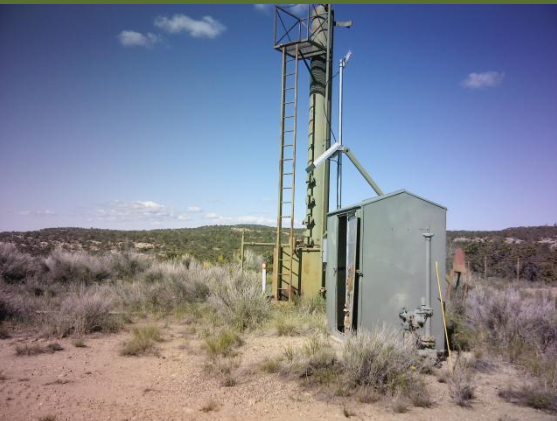Blog
Tagged In: environmental justice, Fossil Fuels, methane, US EPA
Cutting Harmful Methane Emissions to Protect Public Health and Advance Environmental Justice
Dion Mensah, January 17, 2023
Methane pollution from the oil and gas sector is accelerating the pace of the climate crisis and harming the health of our families and communities—and the problem is only getting worse.
Methane is the second largest contributor to the human-caused climate crisis after carbon dioxide—and emissions increased by 17 parts per billion in 2021. Methane has more than 80 times the warming power of carbon dioxide over the first 20 years after it reaches the atmosphere. Even though CO2 has a longer-lasting effect, methane sets the pace for warming in the near term.
Oil and natural gas wells, natural gas pipelines, and industrial equipment commonly leak methane into the atmosphere. Ohio has an estimated 20,439 orphaned oil and gas wells across the state. These orphaned wells have no recorded owners responsible for the plugging and restoration of the well site. According to the Columbus Dispatch, “Orphan wells have been found in 58 of Ohio’s 88 counties, including Franklin, Cuyahoga and Summit where three major cities exist (Columbus, Cleveland and Akron).” Living near oil and gas wells is associated with a load of negative impacts, including: higher risk of cardiovascular disease, impaired lung function, anxiety, depression, preterm birth and impaired fetal growth.
Communities of color, poor and low income neighborhoods, and other marginalized groups are disproportionately harmed by the toxic pollution carried out by the fossil fuel industry. A 2017 report by the National Association for the Advancement of Colored People (NAACP) and the Clean Air Task Force notes that compared to other states nationwide, Ohio has the second highest number of Black folks living within a half mile radius of oil and gas facilities, posing a direct threat to the wellbeing of approximately one in five Black Ohioans. Just as we’ve seen historically, marginalized communities continue to bear the burden of fossil fuel pollution that threatens their health—and their right to clean and safe environments to sustain current and future generations.
In November 2022, the U.S. Environmental Protection Agency (EPA) released new draft rules to cut emissions from methane and other harmful pollutants caused by oil and gas operations across the country. This updated proposed rule builds upon the draft rule released by the U.S. EPA in 2021 and comes after hundreds of thousands of people—including more than 415 OEC members from across Ohio— submitted public comments in early 2022 urging the U.S. EPA to further cut methane pollution.
Without bold action from the U.S. EPA, methane pollution from the fossil fuel industry will continue to skyrocket, accelerating the pace of climate change and threatening public health. The Biden administration needs to use all of its authority to quickly enact strong solutions to cut methane emissions to meet the president’s climate, public health, and environmental justice commitments.
U.S. EPA must take swift action to ensure:
- Operators at wells capture associated gas and limit flaring of that gas in instances in which it is necessary for safety or maintenance reasons;
- Strengthened standards to address emissions from storage tanks by making the standards applicable to more tanks; and
- Clear pathways are provided for participation in the Super Emitter Response Program by ensuring communities and citizens can access data and technologies to help reduce methane and other pollutants in the areas where we live and work.
Strengthening and finalizing these safeguards quickly is essential to advancing environmental justice, slowing the rate of the climate emergency, and keeping everyone’s air clean and safe to breathe across Ohio and the country.
>> Make your voice heard and tell the U.S. EPA to finalize the strongest possible safeguards in the final methane rule here. The public comment period for the proposed rule will be open through February 13th, 2023.

